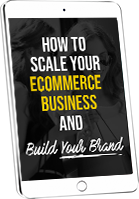In a literal way, inclusivity is the opposite of exclusivity. And so, while being exclusive means something is for a select group, inclusivity, particularly for marketers, doesn’t necessarily have to about trying to include everyone. At times, companies can simply target people who have been underserved. Especially when we think about one of the big no-no’s in marketing – that of trying to be all things to all people – it’s important to understand this distinction and not make the presumption that inclusivity is going against that adage. The below examples demonstrate how engaging and enrolling audiences that have been ignored, in a sense crafting a great experience for the underserved, can yield great results.
Sephora: Clueless Shoppers are Welcome
Plenty of industries are filled with employees who like to make sure (potential) customers know just how “knowledgeable” the employee is, often at the expense of the customer. For my part, I grew up a cycling fan and wouldn’t have enough time to list off the number of times I felt so belittled because an employee in a cycling store was seemingly offended by what he considered an offensively-simple question.
The beauty industry has a similar dynamic.
For its part, the beauty brand Sephora has done an exceptionally good job of making the beauty-shopping experience actually feel inclusive, not snobbish. Blogger Alicia Jessop has described Sephora as the equivalent to women of what a hardware store is for many men[1]. Just as men often go into hardware stores and browse without having any specific product in mind, women often shop at Sephora with that similar sense of discovery, exploration, and accessibility.
It’s fair to say that most everyone has gone into a store where there was a certain product domain they knew nothing about, then either tried to portray they knew something they didn’t, or they didn’t want to acknowledge that they knew nothing. Unless we are just plain lucky, it’s a rare occasion that we leave with the right product and certainly none the wiser.
One of the primary reasons we as consumers behave this way is an expectation of how the “expert”, in this case a store employee, is going to respond. Prior experience has led many of us to be intimidated in environments where there is a lot of domain expertise or technical skill.
But Sephora, while obviously not perfect, mitigates this effect in several ways.
The most obvious way is the store layout. Unlike department stores where all the merchandise is behind a counter and only accessible by employees, Sephora has put product front and center, so that customers can touch and try products without having to ask anyone. There is no gatekeeper to get past or to ask what might be an ignorant question. Instead, customers have free reign to products at Sephora – to touch, hold, and try at their leisure. This may seem like a minor detail, but given the department store dominance in beauty and just the fact that a customer doesn’t have to speak to someone to try something that grabs their attention – these have been big changes in the beauty industry.
Next, when customers do need help, Sephora staff are there to serve them. Training is an important aspect of Sephora’s employee onboarding, whether on the customer service side or the technical side (how to help a customer select makeup that suits them as well as applying it). Training is done at the store level but also through Sephora University, the center for the company’s training. While creating its own training center, aka the University, is an advantage that a massive company like Sephora can afford to do, putting attention to how employees treat customers is something that any business can do, whether big or small.
It’s important to acknowledge that no business is remotely perfect. In researching Sephora, there were plenty of examples I heard about sub-par, off-brand experiences. Particularly in retail, where the inherently imperfect human interaction drives a good part of the experience, perfection isn’t the goal. Being a ton better than everyone else is. On a consistent basis. At the same time, setting up aspects of the business, such as the store’s design, that are not dependent on how an employee chooses to behave, can shift that burden and reinforce the bigger experience that is trying to be delivered.
As we all know, a company’s brand isn’t simply created from one component of the business. It is built everywhere. And in Sephora’s case, creating a welcoming, interactive and fun environment, whether through the store design or its employees’ attitudes, has been a key to their success. It affects customers in the store, their likelihood of making a purchase, and certainly the stories they tell (primarily positive in Sephora’s case), which drives the chances they return and/or how they influence others to do so.
Gwynnie Bee: Serving Plus-Sized Women
When the apparel and accessories business Stitch Fix launched, they initially didn’t target plus-size women (anywhere from size 10-14 and up, depending on whose arbitrary definition you want to choose from). It was a business decision that Stitch Fix (a former client of mine) made, amongst others that also included not serving men or kids, all of which they do now.
This isn’t about right or wrong for Stitch Fix, but their success and focus on its core group of customers, meant that there were opportunities for others to target those that weren’t being served. Stitch Fix was not the only subscription business focused on delivering these same products to women, but in being one of the earliest and certainly the largest (most recently topping $1 billion in revenues and 2+ million active clients), who they were and were not serving was much more visible.
So as Stitch Fix was building its business, and to a certain extent educating the broader market on what they offered, Gwynnie Bee launched at a similar time, exclusively serving plus-sized women. Not that Stitch Fix played into the stereotypes that are all-too-often found in beauty magazines, but the fact that they didn’t stock apparel for plus-size women gave Gwynnie Bee the opportunity to highlight how it was differentiated from the category leader in Stitch Fix. Gwynnie Bee was specifically offering clothes for a group that are not always served by apparel retailers. To this day, beauty magazines constantly reinforce the idea that skinny is better. To its credit, Gwynnie Bee embraced its target customer, and didn’t try to show size 2 women on its site.
Body image is admittedly a sensitive topic; and yet from a practical side, the reality is that many women in the US fall under the plus-sized definition. So while Gwynnie Bee was targeting an underserved and perhaps niche category, theirs was by no means a group with small numbers.
(It’s interesting to note that Stitch Fix eventually did serve plus-size women, in addition to men and children. And Gwynnie Bee announced in early 2018 that to be considered truly inclusive, they were not remaining exclusive to plus-sized women.)
There are plenty of other examples on servicing what isn’t considered mainstream; certain shops target “big and tall” men, some restaurants are “family friendly,” while others are clearly designed for couples.
In all of these cases, whether Sephora, Gwynnie Bee, or others, inclusivity isn’t about trying to be everything to everyone. It’s about targeting a particular group of people, especially those who may be underserved. And then making them feel warm, understood, and served in the manner which we’d all want to be treated.
[1] Jessop, Alicia. “What’s Good Wednesday: Why Women Love Sephora.” https://aliciajessop.com/2012/08/22/whats-good-wednesday-why-women-like-sephora/ August 22, 2012.







Leave a Reply
You must be logged in to post a comment.